Extension of nails: features and technique
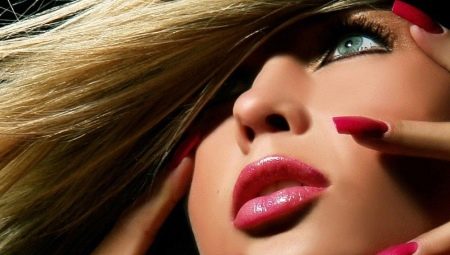
Most of the fair sex consider long beautiful nails very feminine. But not everyone is naturally given strong, beautifully shaped nails. Weak marigolds rarely grow to the desired length. Weakened plates begin to exfoliate, cracks appear. A damaged nail spoils the general appearance of the manicure. You have to grow the length again. But sometimes there is simply no patience or even time for this.
Before a responsible meeting or an important event, you need to quickly return the nail to its original appearance. Better yet, tidy up all the marigolds at once and for a long time. The surest and most convenient solution is the extension of artificial nails.

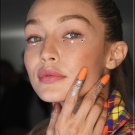
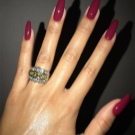
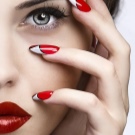
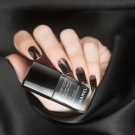
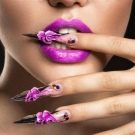
What it is?
The extension procedure has been performed by salon masters for more than a decade in a row. According to certain technologies, nails are coated with a special gel - a chemically created polymer, identical in structure to natural nails. Because of this, it is considered the safest to apply to nails.
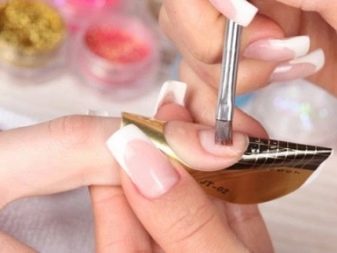

Form nails, allow you to create plates of the desired length and shape. They look elegant and natural, differing from natural ones only in greater strength and impeccable appearance.
You can build them up in different ways, using forms or tips.
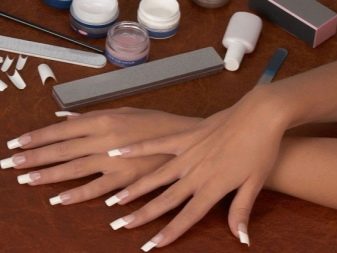

Tips are special blanks made of transparent plastic, fixed on natural nails with special glue. They form the future tips of long nails, which are modeled with a thick gel. For very short natural nails, masters advise choosing tips.As a result, the extended marigolds will look very natural and demonstrate the property of bending without breaking. Do not confuse them with the fake nails that were fashionable in the past, glued to the nail.
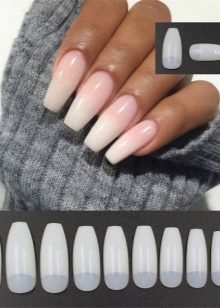
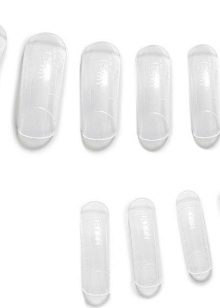
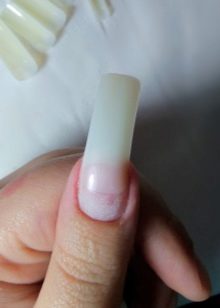
Forms are kind of substrates under the free edge of a natural nail with windows for nail plates. During the simulation, a gel is applied to the substrate and the real surface. When polymerized in the light of a lamp, it will become the free edge of a gel-elongated marigold. With the help of graph paper, the length of the marigold is formed on the forms. At the end of the procedure, the forms are removed. The advantage of marigolds created in this way is in their more elegant form than those extended on tips.
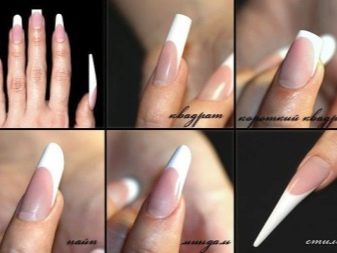

There are two types of forms. Disposable with paper or flexible plastic base. Thanks to their soft structure, they easily adapt to the contour of a natural nail. But because of the softness, the most accurate "fit" is required. And also their deformation is possible in the course of building. Reusable plastic or metal (Teflon) molds. Their cost is an order of magnitude higher than that of paper counterparts, but repeated use in a short period pays off the cost in full. With their use, deformation is excluded, gaps and gel leakage are not formed.
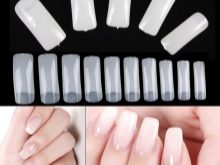
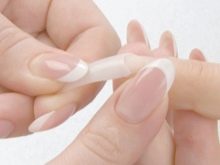
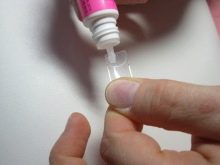
It is important to choose shapes that exactly match the outlines of the natural nail bed. Then there will be no problems with modeling an artificial nail. But it is worth remembering that all reusable forms require disinfection after each use. The gel, which is involved in the formation of nails, is considered the most plastic and environmentally friendly material. It is non-toxic and malleable in operation, does not require sawdust and is sold ready-made. The gel lasts from 3 to 4 weeks on the nails. Therefore, most masters use it for building.
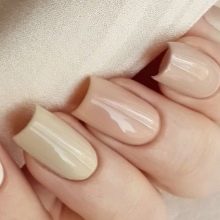
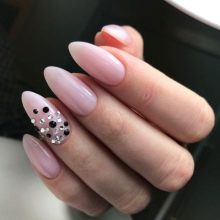
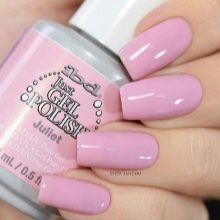
Advantages and disadvantages
The procedure can be performed by a beginner master the first time. Therefore, girls most often go to learn how to build up with a gel.
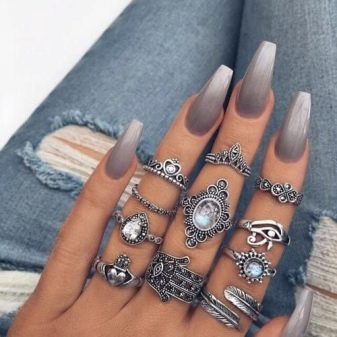

A number of advantages attract the attention of most clients to it.
- Fast execution. The whole process takes no more than two hours.
- The plasticity of the applied product provides the extended nails with flexibility and strength.
- Thanks to the elasticity, the wearing period of gel nails is extended.
- The cost of gel extension is lower in comparison with a similar procedure with other materials.
- The correction is carried out no more than half an hour.
- The natural surface of the plates is strengthened, they grow back under the gel without the risk of breakage and delamination.
- The drug fills the cracks and the relief of the nail plate, and it is leveled.
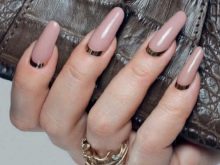
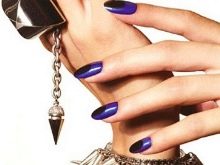
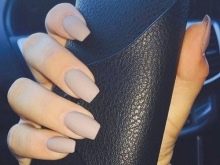
- With the gel, a glossy shine appears on the nails.
- The gel nails are easy to remove.
- The material is breathable, the nail plate is supplied with oxygen and does not dry out.
- Under the gel, natural nails are protected from the destructive effects of ultraviolet radiation, household chemicals and all kinds of mechanical damage. Moreover, the material is recognized as hypoallergenic.
- The composition of the gel includes coniferous resin, and its bactericidal properties are the best prevention of the appearance of fungus.
- Any design idea can be realized on the gel surface.
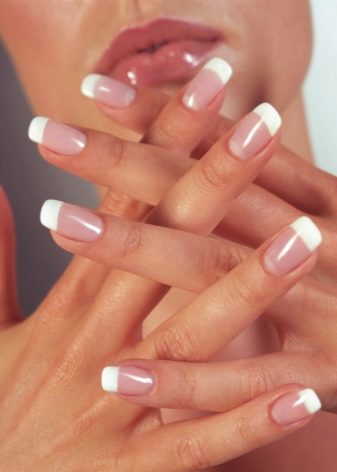
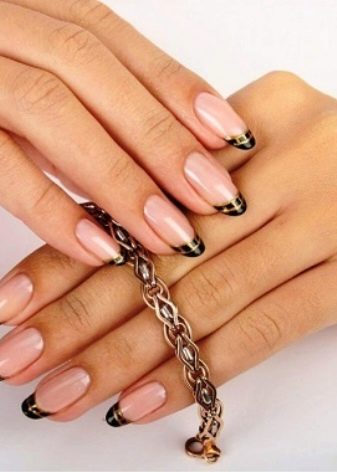
There are still some disadvantages to the procedure.
- When drying the material under ultraviolet light, a burning sensation may occur.
- It is impossible to repair a broken nail. Only a new build-up will correct the situation.
- Without the help of a master, it will not be possible to remove extended nails without harm to them. To remove it, it is necessary to cut off the gel coating so as not to damage the natural one. This manipulation requires a certain level of skill and experience.
- Material can be damaged by sudden changes in temperature.
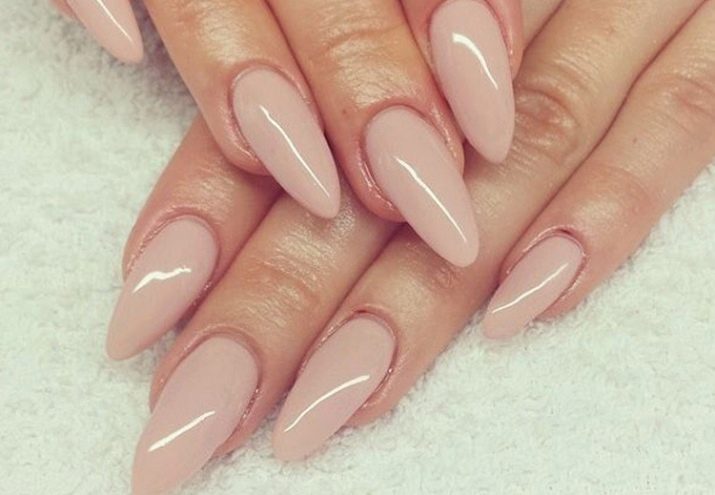
Tools and materials
An effective long manicure is based on high-quality forms, the availability of all the necessary tools and means for surface treatment and modeling of their length.

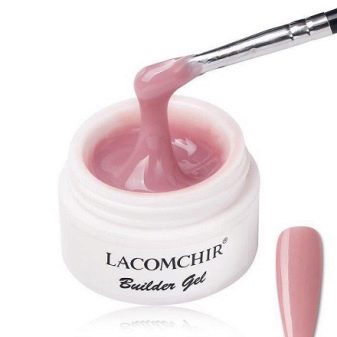
Regardless of the qualifications of the master, you will need everything that is listed in the list:
- disinfectant;
- liquid for express cuticle removal;
- special pusher or orange stick;
- nail scissors and tweezers for the formation of periungual rollers;
- several files and buffs with varying degrees of abrasive;
- brush for cleaning nails;
- dehydrator or any degreaser for nails without oils and fats in the composition;
- primer - a liquid product designed for better adhesion of the gel to the natural marigold;
- base and finishing gel coating;
- polymer for modeling long nails;
- a set of brushes for easy application of materials;
- pigmented varnish, "camouflage", shellac, any decor;
- lint-free wipes for removing stickiness and treating natural nails with a degreaser;
- UF lamp (LED device is not suitable for this type of extension);
- forms or tips.
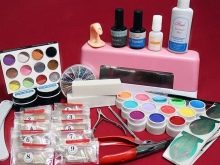
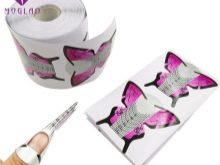
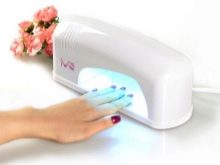
How is the process going?
It is interesting to know about the intricacies of professional building for everyone who is just improving in manicure service. And it is even more interesting for beginners who are going to master this technique on their own.
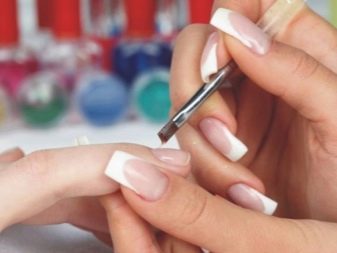
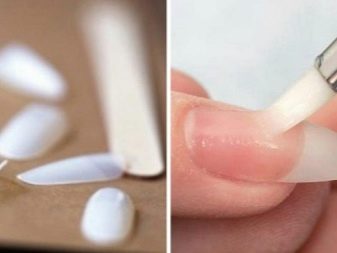
Extension of nails on forms
Let's consider the step-by-step course of the process.
- Disinfection of skin and nails.
- Carrying out a manicure with the elimination of the cuticle.
- Shaping around the edge of the plate. Its length should not be less than 0.5 mm to fix the shape under it.
- Removing gloss from a natural surface with a special buff.
- Cleaning nails from dust with a special brush.
- Degreasing the surface with a dehydrator.
- Coating with an adhesive base (primer).
- Application of a thin base gel layer to the "native" plate.
- Drying the coating under an ultraviolet lamp for about 3 minutes. (according to the power of the device).
- Installation of forms on nails.
Fastening is one of the most time-consuming stages of working with a form, requiring some skill. How clearly the form is worn - the result of the build-up will be so effective.
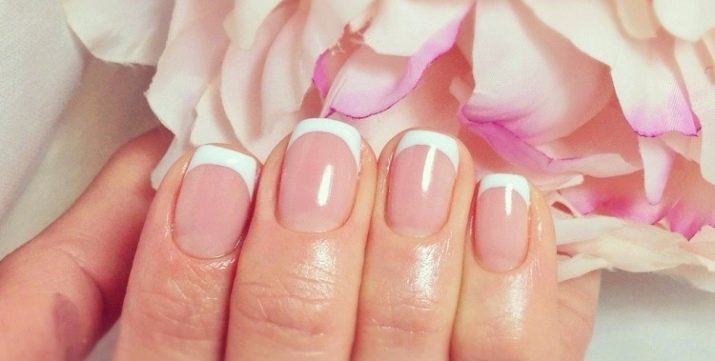
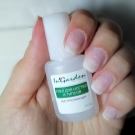

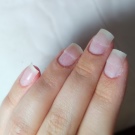
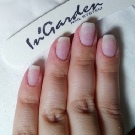
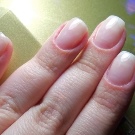
With forms on a rigid basis, there will be no difficulties with their attachment to the free nail edge. You just need to pick them up in size and fit the shapes under the nails. When working with paper forms with nail scissors, you need to correct the window the size of the subungual arch. This stage is very painstaking, since gaps cannot be allowed to appear, otherwise the gel will flow through the allowed gaps. This defect will become more evident as the extended nails grow.
After the shape is fixed, you need to make sure that beautiful curves are obtained from the side and from the end. An even shape will look "clumsy", and an overly curved nail will create the illusion of a claw on the hand.


A step-by-step instruction for building up the length on the forms dictates the observance of a certain course of work. The scheme consists in the sequence: 4 marigolds on the right hand, 4 on the left, and only after that both nails are on the thumbs. This is done so that during the modeling, the gel does not drip from these tilted fingers. Beginners are encouraged to work their fingers one at a time.
When the disposable molds are bent too much, you can bond a couple of pieces together for a stronger workpiece.
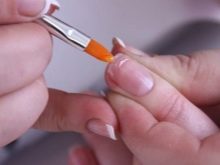
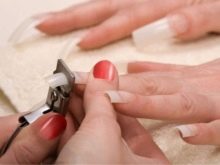
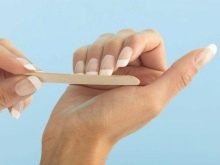
- Nail modeling with thick gel. Now it is important to strictly adhere to certain building rules. Conventionally, the surface of the nail is divided into 3 sectors.

- Cuticle area (one third of the area of the "native" nail from the base).
- "Stress" sector (the remaining 2/3 of the natural plate, the border of the joint between the nail and the shape and a third of the shape). This area has the strongest load, and this is where the name comes from.
- Free edge (the rest of the form).

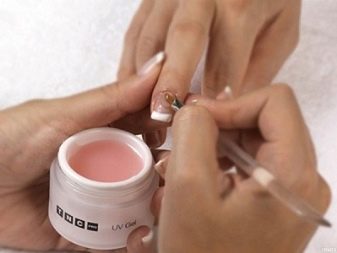
The technique of applying the gel to the forms involves a number of steps. The nail is covered with gel starting from a thin layer from the cuticle area with a gradual thickening during the transition to the stress sector.This area of the nail needs to be "strengthened" with a slight thickening, paying special attention to strengthening the junction of the natural nail with the form - the maximum amount of gel is applied here. The future tip of the marigold is formed with a thin layer.
After the correct distribution of the product on the plate, it is sent to dry in the device for 3 minutes.
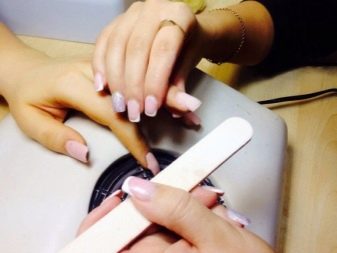

- Removing stickiness from artificial surfaces and removing molds.
- Resurfacing the extended marigold to make it smooth. Forming the nail along a free contour according to the selected shape. Here you can be surprised at the removal of the sticky layer before applying a colored coating. Indeed, for a regular gel manicure, this is unacceptable - removing the dispersion weakens the adhesion of the layers. But when building up, the dispersion is removed to design an artificial plate with a file. Otherwise, the correction will be difficult if the product sticks to the file. Do not worry about poor adhesion of the next layers and the gel surface. The sanded surface will provide the necessary bond strength.


- Application of pigmented gel polish or "camouflage". They are applied in two or three stages, layer by layer, based on the color density. Each new layer is cured by a lamp.
- Designer nail art (optional).
- Top application and UV drying. It is better to hold the top in the light of a UV lamp twice as long as the rest of the layers. This is necessary for better polymerization.
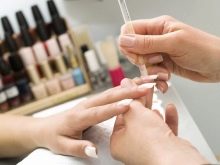
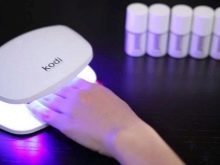
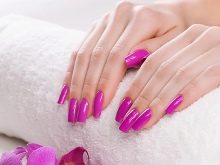
- Removing stickiness.
- The final stage is the nutrition of the cuticles with oil or cream, combined with light massage of the hands and rollers around the nails.
Applying gel to tips has its own nuances. It is worth focusing on them for those who want to build up professionally. In the case of intended work in a nail service, it is important to master both techniques.
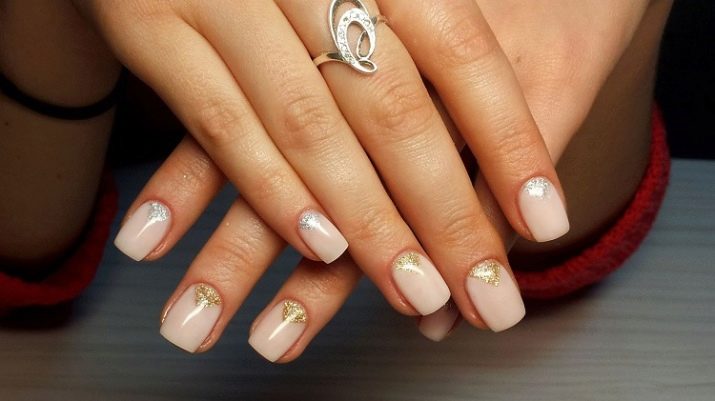
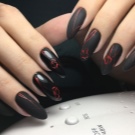

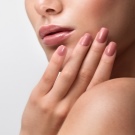
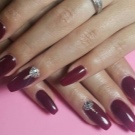
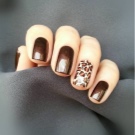
Extension to plastic tips
Use the thinnest plastic plates with an elastic structure. In shape, they should repeat the outlines of natural ones as much as possible. For flat or convex nails, use special shaped tips. If the natural surface is uneven, it is better to take glue-gel. It will fill in all the cavities and give the plate a neat look.
Let's look at the step-by-step instructions.
- Lay out the tips in the order in which they are to be glued, not forgetting that their length cannot be more than 2/3 of the surface of the natural plate. If the workpieces are of the wrong size, they must be carefully trimmed with a tip cutter.
- Wash and then treat hands and nails with an antiseptic compound.
- Get a manicure and remove cuticles. If even a small piece of skin remains, the tips will soon detach.
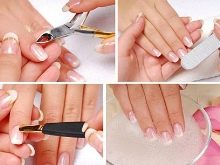


- Trim the nail to a length of 0.5 mm and file with a file.
- Remove the shine from the plate with a polishing buff.
- Apply glue to the plastic piece. Lubricate with glue only the area that will be in direct contact with the nail.
- Gently press the tips to the nail plate and hold for 15 seconds. This is sufficient for a good fixation of the workpiece. If small bubbles are found, it is advisable to redo the work so that the manicure looks neat in the future.
- Give the glued plates their final shape. Remove the excess length with a tip cutter, file the free edge. In this case, the form can be selected at will.
- Clean the surface with a polishing block.
- Smooth the border between the natural surface and the tip with a coarse abrasive file.
- Degrease the plates.
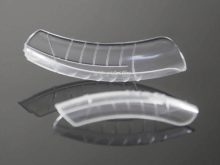
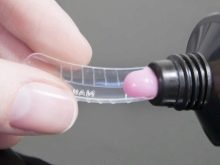

- Apply primer.
- The next stage is working with a gel. In turn, thin layers are applied starting from the center of the nail, retreating 1 mm from the cuticle and rollers.
- The largest amount of gel should be in the center of the nail.
- Dry each nail in a lamp for 3 minutes.
- Remove the sticky layer.
- File away any irregularities, including the sides and cuticle area. Process the edges of the marigolds as thin as possible.
- Apply the finish thinly in an even layer, paying attention to the previously unfilled areas at the side ridges and cuticles.
- Dry the surface with a lamp.If stickiness appears, remove the unwanted layer.
- Oil the wells and cuticles.


Design options
The extended transparent marigolds, although beautiful in themselves, never remain without an attractive manicure. Few of the owners of chic long nails prefer a solid color applied with regular varnish. This, of course, is the most convenient and budgetary solution, but this length was not created for the sake of modesty. The only exception is red. Even in monochrome it looks noticeable and advantageous.
Every year, the design of extended nails invites you to try many new interesting options. Among them, you will probably be able to pick up new items suitable for every owner of long gel nails. The choice is the most natural and especially effective design options.
The chic design is worn for up to 4 weeks until correction is needed. And if you wish, you can change it as often as you like.
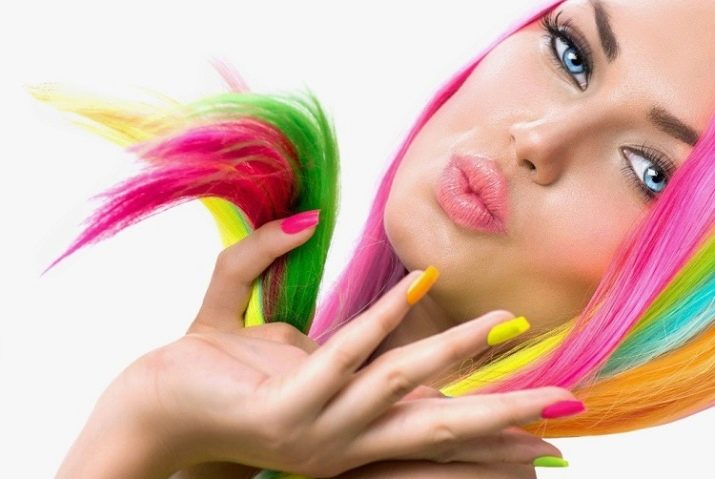

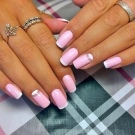
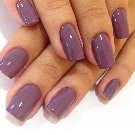
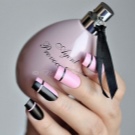
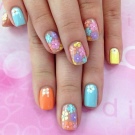
- French manicure. There are a lot of fans of the French technique, because for a long time it has not been done exclusively in pastel colors with a white free edge of the marigold outlined. There are so many variations in nail design that you can easily choose the right one for any outfit and mood. The hole on the jacket is made beveled to one side, decorated with rhinestones, sequins with sparkles. It is painted with bright varnishes or acrylic paints, glitters with silver, bronze, and gold. Basically, only the neutrality of the general background is preserved. Most often, natural delicate colors are chosen to contrast with the decorative part of the composition.
Sometimes one or two marigolds stand out, on which, instead of a jacket, they perform some kind of pattern with a brush, stamping or slider. It looks beautiful on a mixed jacket, when the edge of the nails is painted over in the same color not on all fingers.
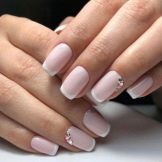


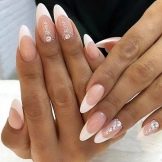
- Lunar manicure. "Inverted" jacket, a very fashionable and popular solution for nail design. The lower hole on the nail is made in contrast to the main color, for which bright shades are chosen. Often the hole is painted in one of the camouflage colors to make it look natural. On such a manicure, the border of the growing nail is not visible for a long time. This is a significant plus for which such a design is revered.


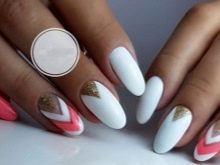
- Geometry. All kinds of lines, rhombuses, squares, diagonal intersections, circles - a wide range of solutions. They draw on the main background with contrasting colors or create an ornament with special tape of metallic or gold color.
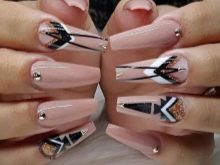
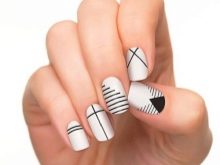
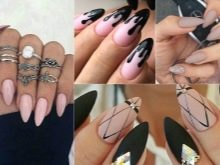
- Sweater nails or the so-called "knitting" - a popular trend in nail design in the autumn-winter period. Such 3D nail art captivates with its cozy beauty. Basically, beige, pink, coffee shades are chosen for the "sweater" on the nails. They are often combined with patterns depending on the season. Matte marigolds alternate with a glossy finish. The only negative is that you don't want to hide such cute and well-groomed fingers in gloves.
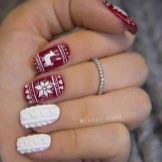

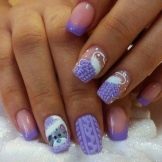
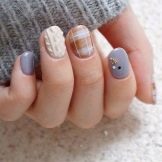
- Ombre - trendy gradient manicure for lovers of everything unusual and attractive. Mixing contrasting or similar shades produces stunning results. This is a great solution for holiday and everyday events. A combination of varnish textures, a combination of gloss and matte finish is allowed. Gradient manicure looks good with rhinestones. You can make several color transitions on your nails.
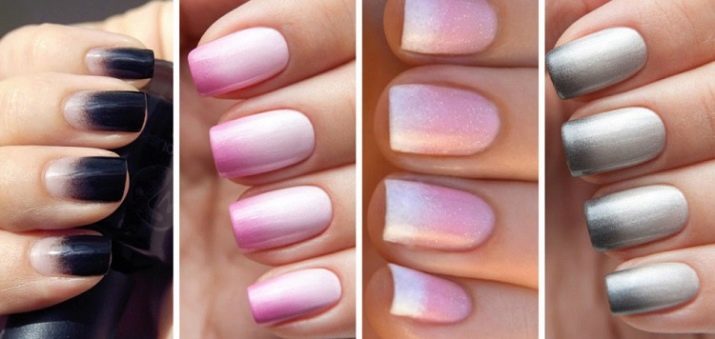
- Wedding manicure - choosing brides for the most important day in life. Here extended nails are more important than ever. The same shape and length looks neat and festive. As a design, they use modeling, flowers, lace, butterflies, patterns of rings, doves, rhinestones, shiny elements. The main colors are white, cream, natural camouflage, pale pink, peach.


Possible problems and care rules
How long nails look attractive after build-up depends on the way they are handled. An artificial surface needs no less care than a natural one.Gel nails must be handled carefully, avoiding sharp blows and force on the plates. Be careful when pressing buttons with long nails, fastening buttons and zippers. Gnawing nails extended with gel is not at all permissible!
If they are not handled correctly, the tips gradually peel off, the gel becomes cracked, and the nails hurt.
Artificial plates look attractive only with regular correction and cuticle removal. As the skin grows, it is removed, giving the nails a well-groomed look.
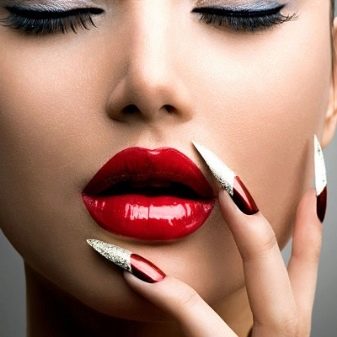
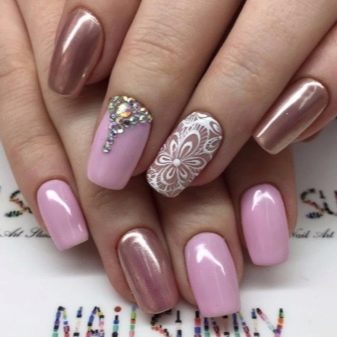
To avoid problem nails, you need to maintain good hygiene. In no case should you miss the stage of processing nails, hands and tools during the extension process. The introduction of a fungal infection entails great trouble for the health of the nails and the body as a whole. Gel nails require periodic correction. It is better to do it twice during the first month after building, then monthly. The exception is breakage or other problems with the nails.
It is not permissible to use metal files for processing gel nails. For this purpose, you need to purchase a fine abrasive file. For cuticle care, it is best to use a liquid remover and a softener oil.
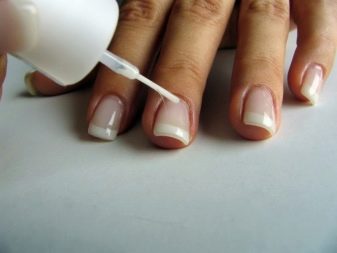

Gel nails should be acetone-free. It has a destructive effect on the polymer and makes it dull. It is important to choose professional pigmented varnishes without acetone. The same goes for nail polish remover.

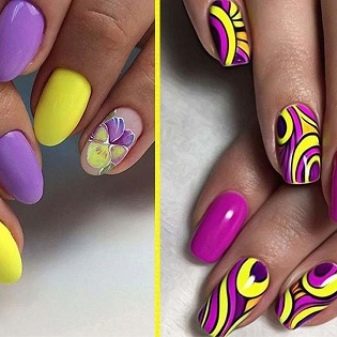
In addition, gel nails react negatively to acids and alkalis, which are saturated with most detergents. Only housekeepers or a more budgetary option - rubber protective gloves - will come to the aid of women in preserving beautiful marigolds. Such simple recommendations will help to keep the extended gel nails in a flawless form for a long time.
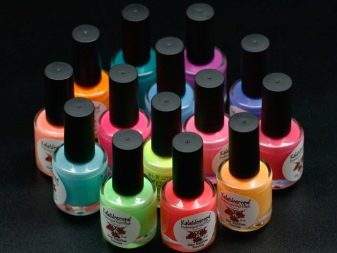

Beautiful examples
- A manicure on long nails, made in two colors of a similar shade, has a very beautiful look. It is suitable for everyday wear and for any occasion in life.
- A two-tone manicure in contrasting colors is no less good looking, but requires external correspondence in the details of the image.
- Stamping made in compliance with color contrast will look original on the nails.
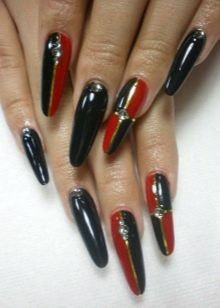
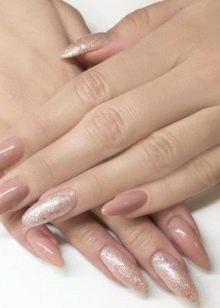
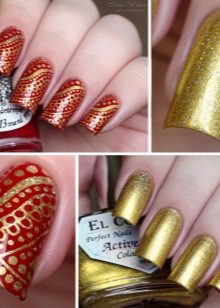
Seasonality also plays a role in design choices.
- In winter "knitted" patterns, snowflakes, the image of Christmas tree decorations, a lot of shine and cold shades are relevant. Blue in different shades, silver, gold, red, juicy green - the color of the needles. The main tone of the manicure also depends on the symbol of the year and its accompanying colors. Drawings are also often chosen to match him.
- Autumn encourages leaning towards yellow-coffee tones. Frequent marigold decorations are leaves of all shades of autumn, bronze overflows, matte surfaces in combination with brown or reddish gloss. The color of ocher, ripe tangerine, wet asphalt, saturated cappuccino is popular among women.
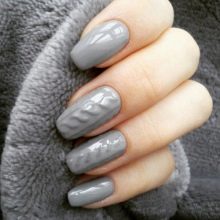
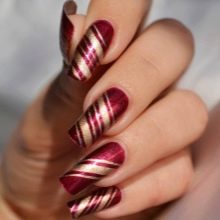
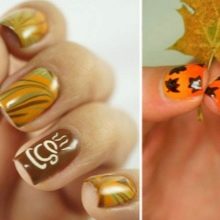
- Summer designs are almost always associated with teal, blue, white and neon colors. Anchors, seagulls, palms, boats, shells are depicted on the nails. The girls live in anticipation of a vacation and a long-awaited rest. Feet "on the subject" cheer up in anticipation of relaxation.
- Spring - a mix of all design options on the nails. But still, delicate colors, flowers, mint, peach, all shades of pink, coral predominate. This is a kind of spring classic associated with the awakening of feminine sensuality along with nature itself.
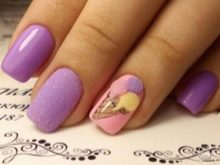
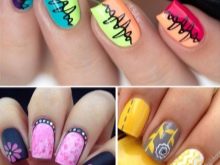

Reviews
If you are lucky enough to find an experienced master, artificial nails will delight clients for a long time with their durability, the same length, correct shape and beautiful design. Women respond positively about such marigolds, mainly complaining about their inaccuracy or untimely correction in case of breakdowns. In general, extended nails only delight with long wear, perfect adhesion of the coating and length.They give the hands a well-groomed look, visually lengthen the fingers, making the hands more feminine and younger.
Gel polish on such nails does not wear off in the same way as regular polish. Therefore, there is no extra spending on nail art from the master. The cover stays firmly in place and is worn until you want to change the design.

Self-application of gel to tips or forms is difficult only for a few novice masters. Experience comes from work, so in a short time self-taught people are able to get used to carrying out the process without problems. And those who attend special building courses do the job flawlessly.
In addition, building nails on your own is not only interesting for self-development, but also beneficial for the budget. You will have to spend on a large scale only once, and then only bribe varnishes to implement new ideas. Buffs, files, degreaser, top and finish - this is what will last for a long time. And the lamp and reusable molds, in general, are a one-time contribution to nail beauty.
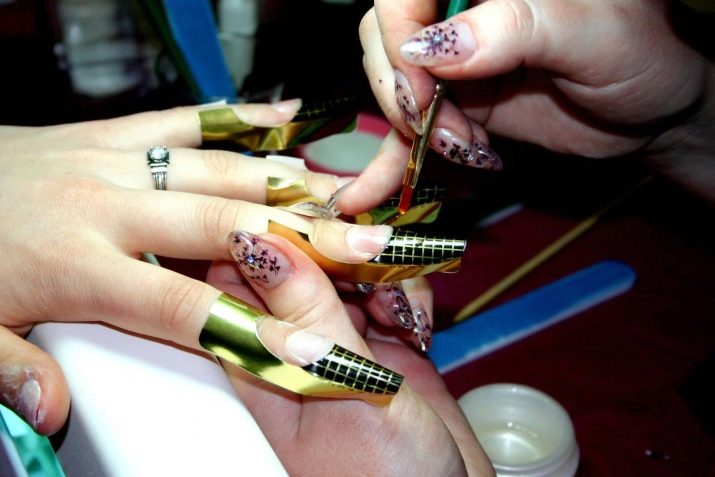
Masters praise the gel for its plasticity and non-toxicity. They prefer it for the absence of dust from surface sawdust, unpleasant odor and self-drying. It is pleasant to work with polymer material, to create a modern design on a smooth surface. The work process is not too tedious, which allows you to receive a large number of clients. It is beneficial and interesting to any developing master.
Therefore, gel extensions continue to improve and are becoming more and more in demand in the field of nail service. There are new ideas for manicure, trends in shaping plates, more perfect and elastic materials. Women have a lot to choose from, and they do it with pleasure.
About arch modeling of nails - in the next video.








